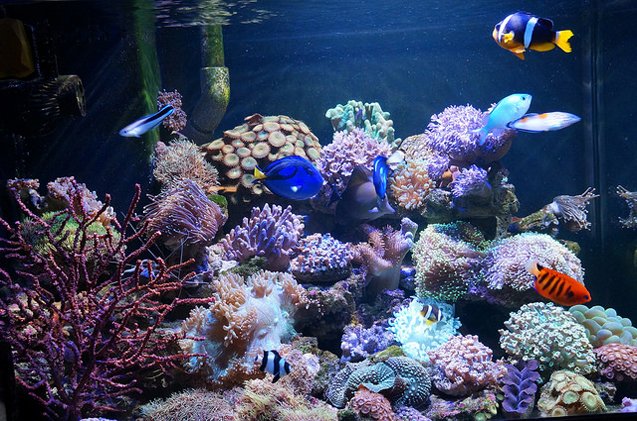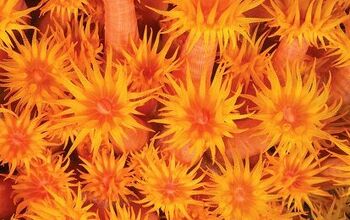Colorful Tips for Starting a Nano Reef Tank

There is nothing more beautiful than a fully stocked reef tank loaded with corals, live rock, and colorful saltwater fish. But reef aquariums can take up a lot of space and they require a significant amount of upkeep. If you like the idea of a reef tank but don’t have a limitless budget or unlimited time to dedicate to its upkeep, you may want to consider a nano reef tank.
What is a Nano Reef Tank?
The name “nano reef tank” is probably enough to help you form an idea of what this kind of tank is. A nano tank is simply a reef tank in miniature, generally 30 gallons or less. The size of the tank is what earns it the “nano” nickname but, in all other aspects, it is a typical reef tank with corals, marine invertebrates, and even small fish.
Related: Coral Reef-Safe Fish Species for Saltwater Tanks
But setting up and maintaining a nano reef tank is not quite the same as working with a standard reef tank. Many aquarium hobbyists mistakenly assume that small tanks are easier to maintain than larger tanks. While it may take less time and money to set up a nano reef tank compared to a standard reef tank, both still require a significant amount of maintenance to keep the conditions in the tank stable. Tank parameters can fluctuate quickly and dangerously in a small tank.
Start-Up Tips for a Nano Reef Tank
If you already have experience with reef tanks, you may be able to design and set up your nano reef tank from scratch. For those who have never worked with a reef tank (or any other kind of saltwater tank), however, you may want to think about purchasing a nano reef tank kit.
Related: Top 5 Low Light Corals for a Beginner Reef Tank
These kits come with the tank itself as well as the equipment you need such as a filtration system and a lighting system. Maintaining high water quality and stable water parameters is essential for a healthy nano reef tank, so do not take the task of setting up your tank lightly. You should plan to test your tank water at least once a week to make sure the conditions are ideal.
In addition to setting up and equipping your nano reef tank, you also need to think about your tank inhabitants. A nano reef tank can accommodate small polyp corals and soft corals as well as small mushroom corals. You may also want to include some live rock for decoration and live sand for your tank substrate.
If you want to include fish in your nano reef tank you should wait to add them until the conditions in your tank have stabilized and you should choose fish that grow to no more than 2 or 3 inches in length. Gobies, blennies, and fire fish are good choices for a nano reef tank. If you plan to include invertebrates in your tank, make sure they will not cause problems with your fish and vice versa.
Setting up and maintaining a nano reef tank is a challenge, but it can also be rewarding. Achieving success in cultivating a thriving miniature reef environment is quite an accomplishment – one that any aquarium hobbyist would be proud to show off.

Kate Barrington is the loving owner of two cats (Bagel and Munchkin) and a noisy herd of guinea pigs. Having grown up with golden retrievers, Kate has a great deal of experience with dogs but labels herself a lover of all pets. Having received a Bachelor's degree in English, Kate has combined her love for pets and her passion for writing to create her own freelance writing business, specializing in the pet niche.
More by Kate Barrington























